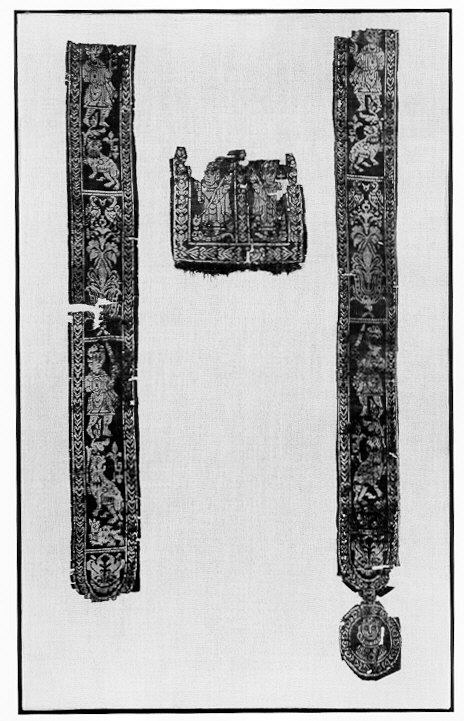Tunic Bands with Warriors
Not on view
The majority of early silks found in Egypt were excavated from the cemeteries of the Upper Egyptian cities of Antinoopolis (Antinoë) and Panopolis (Akhmim). The two examples displayed here are typical of the silks found at Akhmim: in general, they are brown, green, or pale yellow in color with vegetal borders and repeating designs divided into slender compartments separated by bands. Many of the silks have names inscribed in Greek, Coptic, or Arabic script, suggesting that the silks were produced after the Arab conquest of Egypt.
The example seen here begins with a stylized palmette, above which a hunter holding a sword and shield pursues a lion and a rabbit. A candelabrum-like floral motif topped by birds completes the design. The bands are framed by a border of leaves and flowers, similar to that of the adjacent textile. The small roundel contains a crowned female head.
Due to rights restrictions, this image cannot be enlarged, viewed at full screen, or downloaded.
This artwork is meant to be viewed from right to left. Scroll left to view more.









